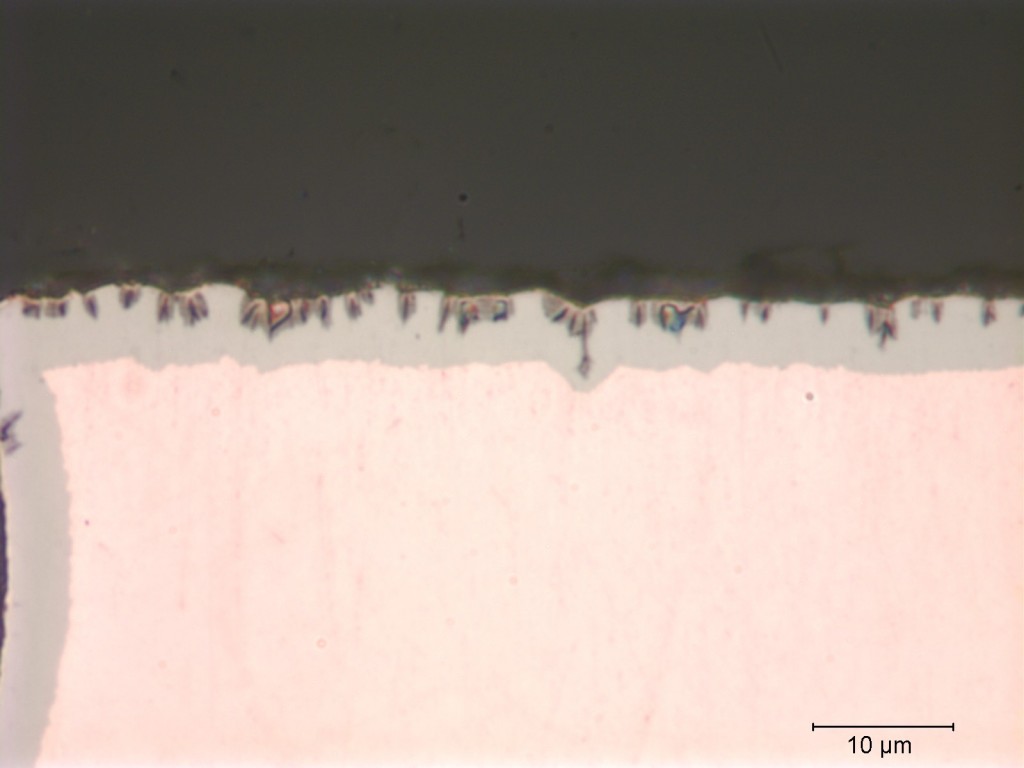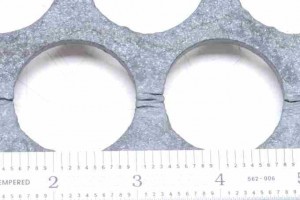Last week, Larry Hanke presented a paper co-authored with Dieter Scholz at the 2015 Microscopy Society of America (MSA) annual meeting in Portland, Oregon. The presentation, Microstructure Enhancement Using Ion Beam Milling, was based on work done in our laboratory preparing challenging samples for microscopic evaluation.
These images show a gold ball bond on an integrated circuit. In the top image we see the sample after it was mechanically prepared/polished. The next image was taken after the sample was ion milled.

– As polished

– Ion Milled
Microscopic inspection for device quality assurance, failure analysis, and materials characterization relies on optimum sample preparation to produce accurate and useful data. Good sample preparation for medical devices, semiconductors, microelectronics, and nano-materials has become more challenging in recent years due to high-technology materials, complex assemblies, and smaller components. Although mechanical cross sectioning, polishing, and chemical etching are sufficient for many applications, ion beam milling provides an additional level of quality and clarity for critical and difficult-to-prepare samples.





